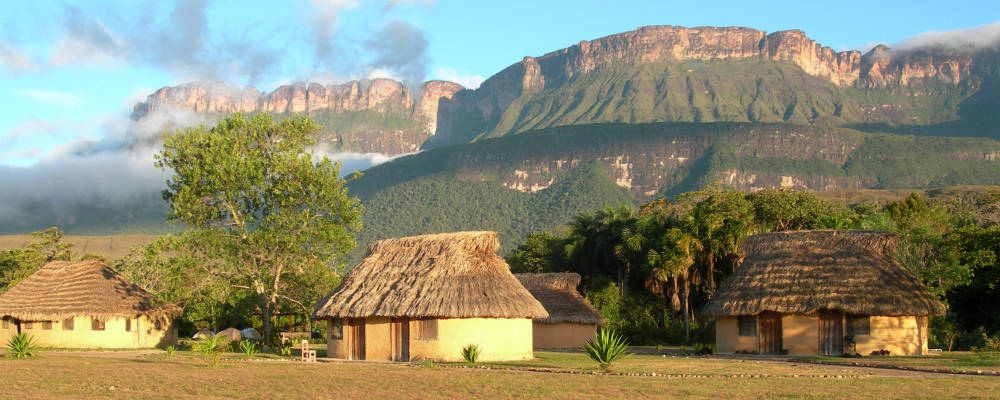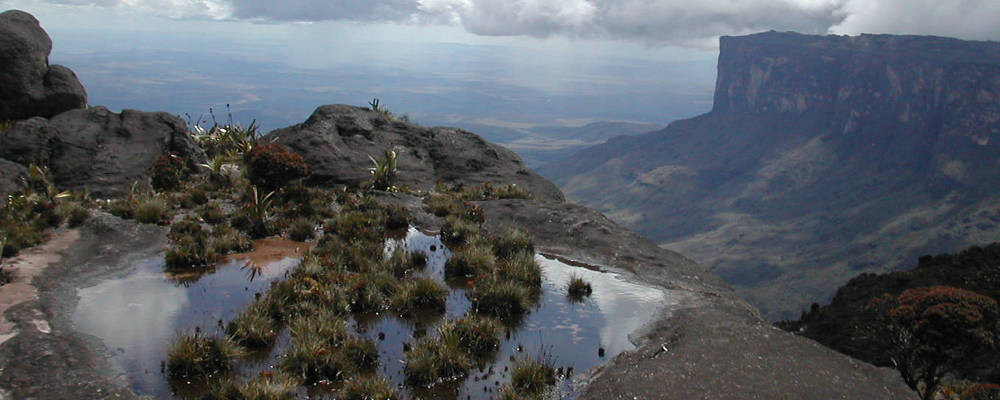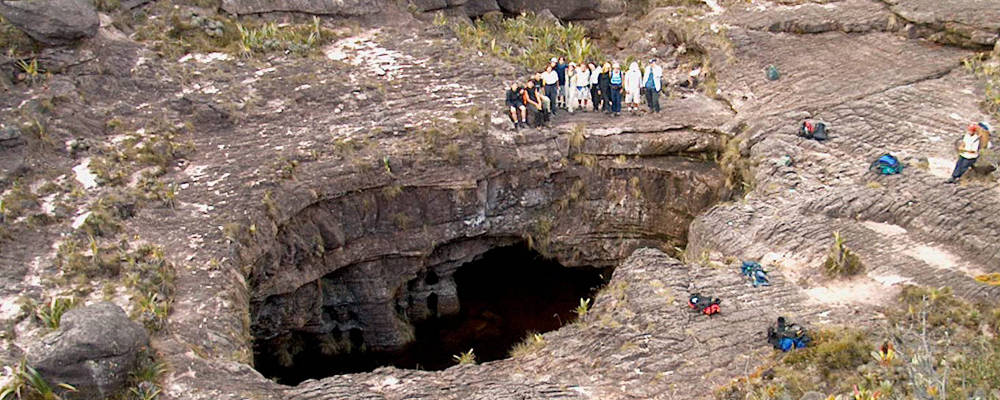Located on the southeast end of Venezuela in the Guiana Shield in the jurisdiction of Piar, Sifontes and Gran Sabana of Bolivar State municipalities.
It was created on June 12, 1962 with an area of 1,000,000 ha. expanded to 3,000,000 ha. 1975.
It is one of the largest natural park of the Planet and of course the most beautiful and impressive.


It covers the entire eastern and upper Caroni River Basin. Water source of the largest hydroelectric complex of Venezuela, and the basins of the Carrao, Kukenán, Yuruaní, Aponwao and Surukun rivers.



The park occupies the northeastern sector of the Guiana shield, which corresponds to a Precambrian basement rocks between 900 and 3,500 million years, which are the quartzites and siliceous conglomerates of Roraima.
The predominant forms correspond to a combination of tepuis, plains and valleys. Among the tepui are the Auyan-tepui (2,400 m) from where the Angel (Karepaku-pa merú) who with his fall of 979 m is the highest in the world arises; the Roraima (2,800 m); Chimata that of (2700 m); that of Kukenán (2,600 m) and 34 Tepuy more.
The vegetation in these tepuy varies from the tropical rainforest in the bases and slopes, to shrubs and grasslands at the top, with a great diversity of endemic species; in the areas of savannahs and valleys and morichales grasses predominate, with presence of gallery forests. The fauna is varied, honoring the anteater, jaguar, giant otter, fox and howler monkeys; among birds, the harpy eagle, pigeon hawk, dwarf macaw and the hummingbird. In the park have been vestiges of a significant pre-Hispanic indigenous village; currently living in this territory communities of indigenous Pemon ethnic group with subgroups kamaracotos, taurepan and arekuna. Its territory was recognized in the eighteenth century by the Catalan Capuchin missionaries.
The Tepuyes

The word Tepui comes from the indigenous Pemon word meaning "Mountain". colossi are not equal that populate the entire park, are ancient mountains of special features, unique in the world and whose peaks can find among other things, an endemic flora much internes scientist. Ecological formations belong to some 2000 million years old.
wildlife
The park's fauna is diverse, and is spread according to multiple environmental factors such as height and type of vegetation. Among the species that can be found areThe anteater, the peccaries, the Guianese squirrel, puma, deer, three-toed sloth, weasel, fox farmer, monkeys lined face, machin monkeys, mice, giant anteater, giant otter and giant otter, jaguar or tiger and ocelots, reptiles like the chameleon iguana, selvatico tortoise, snakes such as the false coral, Bejuca, anaconda, false mapanare, and poisonous as coral, mapanare, cuaima pineapple and bell. Also numerous species of frogs and toads. as to the birds we can mention the red macaw parrot dirty face, king vulture, ringer, hummingbird, birds cappuccinos, cock of the rock, toucans . melero bear the peccaries, the Guianese squirrel, puma, deer, three-toed sloth, weasel, fox farmer, monkeys lined face, capuchin monkeys, mice, giant anteater, giant otter and giant otter, jaguar or tiger and ocelots, reptiles like the chameleon iguana, selvatico tortoise, snakes such as the false coral, Bejuca, anaconda, false mapanare, and poisonous as coral, mapanare, cuaima pineapple and bell. Also numerous species of frogs and toads. as to the birds we can mention the red macaw, parakeet dirty face, king vulture, ringer, hummingbird, birds cappuccinos, cock of the rock, toucans
flora
The flora of Canaima park is varied and rich in endemic species, meaning that are unique species of this region.Serious long to deepen each list, so the most important mocionaremos:
Bonettia roraimae, Bonetias of the tepuis, Bochinea Reducta, Brochinea Micrantha, Clusias, Droseras, Eliamphoras, Stegolepis guyanensis, Orectanthes, Euterpes (palms), Thibaudias, and long etcetera, since the park there are a lot of plant species we will copilando and exposing soon.
In any case it is important to understand what is necessary to preserve these species, to respect and prevent its destruction by the negligence of park visitors who pass indiscriminately above the vegetation in the area regardless of the damage caused.




0 comments:
Post a Comment